MARKETING
How to Build a Customer-Centric Business
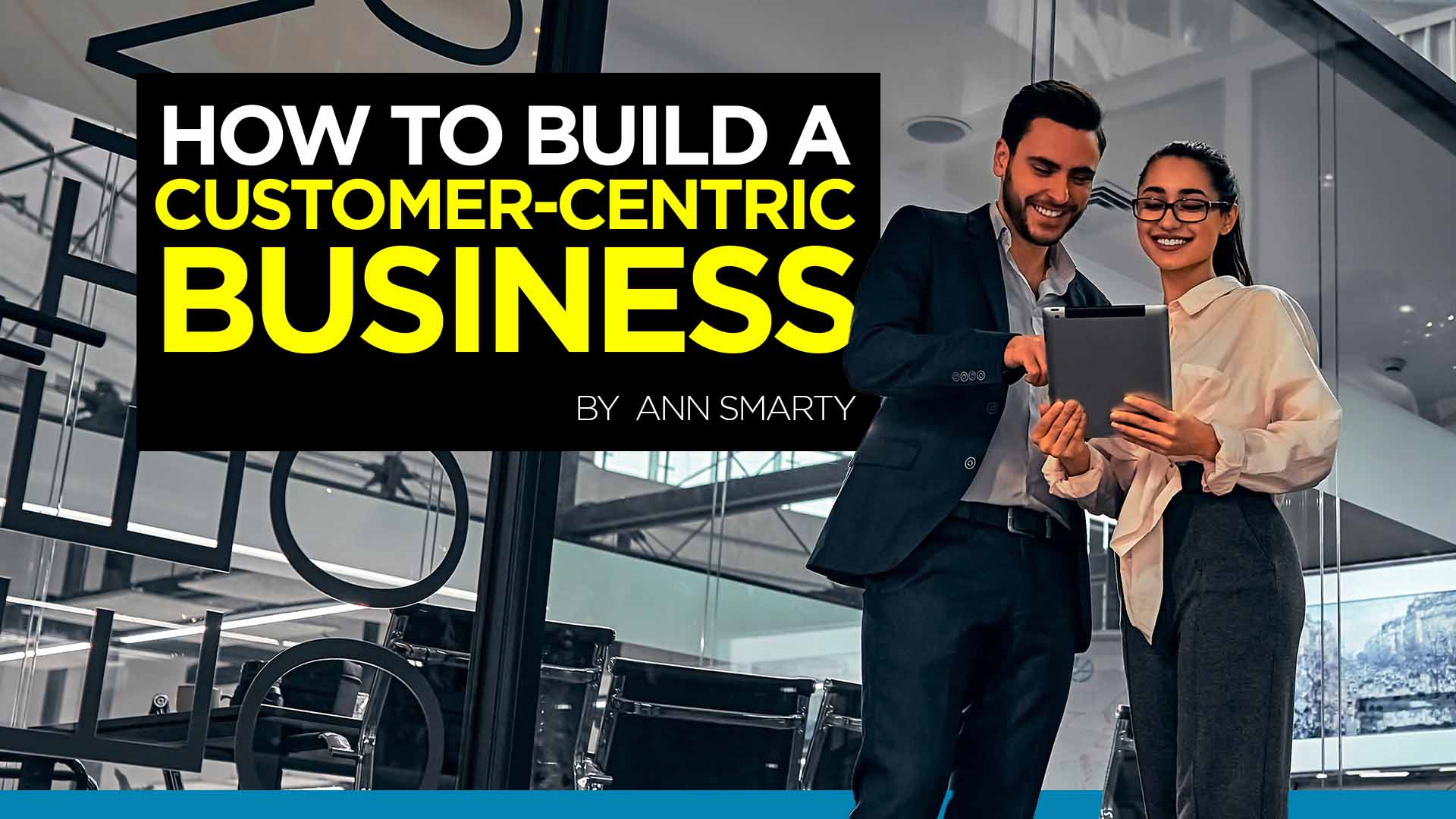
Most businesses out there are product-focused, i.e. they have a product to sell.
This is how it works:
- Offer a service or create a product
- Find people to sell it to
- Make a lot of money
- Quit selling “offline” or quit their day job
It sounds good (in theory). The problem is that this is like pushing a huge rock uphill. Trying to force a product on a market that hasn’t asked for it can be a long, long process – which nonetheless can be successful, of course. The world hadn’t known they needed computers when they got into the market. But let’s face it. Cases like that are very few.
There’s another model that a lot of companies are using very successfully, but you just might not know it. It’s called building a “customer-centric” business.
An customer-centric business includes the following typical steps:
- Determine what a market needs
- Build a product that covers that need (or adjust your own product to better fit that need)
These are two fundamental steps but there are many routes you can take to build it up:
- Build a true bond with your “audience”
- Learn what they really need
- Sell products/services that they’ve asked for
- Continue delivering way more value than you “take”
- Provide high value education to a small set of people
- Delight those people and grow your platform (website/blog, youtube channel, email list, podcast subscribers)

Get the Digital Marketing Blueprint…
With a Customer Value Journey that strategically builds a relationship with new prospects and converts them into loyal, repeat customers. Click here
So how to understand what your target audience needs?
Market research can be as expensive and extensive as your budget allows. There are lots of companies offering you a detailed niche analysis, surveying, numbers and stats. This is what corporations are investing into on a regular basis.
The good news is, the Internet offers lots of opportunities to research your target niche for free or on a tight budget and keep it in-house.
The Internet made customer centricity possible for any small business. Here are a few ideas:
On-site analytics
On-site analytics is a traditional way for website owners to evaluate their traffic, its sources and entry pages. But it is also a great way to understand your target audience better. Google Analytics provides detailed demographic information – from gender and age to your customers’ locations (like popular cities people tend to access your site from).
As I am writing this, I am surprised my readers tend to access my site from London – sounds like I need to be doing a better job addressing UK audience’s needs:

Surveying your current (or potential) customers
Asking your customers what they need from your product or service, which features they like best and which of those are not set up the way they can be useful is a great way to align your business to your target audience needs.
When surveying your customers:
- Mind that there will always be people who just don’t like everything.
- Don’t let yourself get discouraged by negative comments. Remember, it’s the route, not the destination
- Don’t rush to implement changes or add features right away: Make sure to take time to collect feedback, there will likely be conflicting comments: Some people will love the features others hate.
- Don’t just look at stats: Make sure there’s a field for your customers or readers to have an ability to add their own comments. Some of those ideas will turn invaluable and spark your inspiration for future plans.
As to how you create that survey and introduce it to your customers and/or site users, you can use Google Forms (which are free). There are also quite a few surveying plugins allowing you to embed your surveys to your site.
You can also set up a newsletter to reach out to your customers to invite them to help you out.

This will also let you identify your most active and loyal customers: Make sure to create a segment for those to reach out more, give away special offers and turn them into brand advocates.
It is also a good idea to time your newsletters the way it is more engaging and delivers better results.
Semantic research
When you are just entering a niche, semantic research is one of the best ways to quickly understand underlying concepts and entities. Text Optimizer is the best tool for the job. Run your established competitor’s name through the tool to understand what your future customers associate that brand with:

Keyword research
Traditional SEO-driven keyword research offers a solid insight into what people are struggling with and even the demand (i.e. search volume) for a particular feature or problem solution.
SE Ranking keyword research tool allows marketers to extend their search queries, find related queries, evaluate keyword difficulty and search volume. You can also cluster your keywords and turn them into mindmaps to better understand your target topic.
Just like with Text Optimizer, for market research, consider using your competitor’s product name as a keyword to better understand what their customers are searching for:

Question research
Knowing what your target customers are asking around the web is a great way to create a product and content development strategy that solves their problems.
Buzzsumo is the best way to research niche questions because it pulls data from multiple sources allowing you to get lots of insights at a glance:

Social media listening
Social media listening is a great way to understand your target audience and relate to it. By listening to and participating in relevant discussions you get to build connections, identify who influences them and what they don’t like about the existing products and competitors.
As you may have guessed, listening to your competitors’ customers is just as a good idea as listening to your own.
Awario offers a great social media listening solution that helps you create alerts that include several of your competitors by using boolean search. For small and local business, the feature allows one to hyper-target their alerts to a certain location:

Social media listening is not just about monitoring brand mentions though. It is a good idea to monitor related questions, discussions and trends. This will allow you to align all your marketing efforts – including blogger outreach, email marketing and seasonal content creation to niche trends and activity.
Customer centricity at every stage of product development
Creating a customer-centric marketing and product development strategy doesn’t have to happen at the launch.
In fact, it is never too late or too early to make your business customer-focused:
- Ask for your customers’ (or social media followers’) input on your new product or brand name. Namify is a cool tool that can suggest those names and provide an easy way for you to choose the best one.
- Evaluate your customer support activity to better understand your customers’ struggles and develop your content strategy around those problems.
- Use social media listening and keyword research to understand what is missing from your competitors’ offerings and develop a product that covers that need. Keyword gaps can help you in understanding customers’ demand that is not yet satisfied.
Why should you consider building an audience-based business?
So should you consider turning your business from product-based into audience-based? Here’s why you might want to consider it:
- It’s hard at the start, but if you persist you’ll have an loyal audience and a solid platform
- Your product ideas can come from the audience (vs from your imagination)
- It beats chasing transactional sales. You’re making sales based on relationship
- You own the platform – you don’t have to continually beg to “borrow” other people’s audiences
Customer-centricity makes your business safer from reputation crises or changing digital marketing landscape because it fosters brand loyalty.
MARKETING
YouTube Ad Specs, Sizes, and Examples [2024 Update]
![YouTube Ad Specs, Sizes, and Examples [2024 Update] YouTube Ad Specs, Sizes, and Examples](https://articles.entireweb.com/wp-content/uploads/2024/06/YouTube-Ad-Specs-Sizes-and-Examples.jpg)
Introduction
With billions of users each month, YouTube is the world’s second largest search engine and top website for video content. This makes it a great place for advertising. To succeed, advertisers need to follow the correct YouTube ad specifications. These rules help your ad reach more viewers, increasing the chance of gaining new customers and boosting brand awareness.
Types of YouTube Ads
Video Ads
- Description: These play before, during, or after a YouTube video on computers or mobile devices.
- Types:
- In-stream ads: Can be skippable or non-skippable.
- Bumper ads: Non-skippable, short ads that play before, during, or after a video.
Display Ads
- Description: These appear in different spots on YouTube and usually use text or static images.
- Note: YouTube does not support display image ads directly on its app, but these can be targeted to YouTube.com through Google Display Network (GDN).
Companion Banners
- Description: Appears to the right of the YouTube player on desktop.
- Requirement: Must be purchased alongside In-stream ads, Bumper ads, or In-feed ads.
In-feed Ads
- Description: Resemble videos with images, headlines, and text. They link to a public or unlisted YouTube video.
Outstream Ads
- Description: Mobile-only video ads that play outside of YouTube, on websites and apps within the Google video partner network.
Masthead Ads
- Description: Premium, high-visibility banner ads displayed at the top of the YouTube homepage for both desktop and mobile users.
YouTube Ad Specs by Type
Skippable In-stream Video Ads
- Placement: Before, during, or after a YouTube video.
- Resolution:
- Horizontal: 1920 x 1080px
- Vertical: 1080 x 1920px
- Square: 1080 x 1080px
- Aspect Ratio:
- Horizontal: 16:9
- Vertical: 9:16
- Square: 1:1
- Length:
- Awareness: 15-20 seconds
- Consideration: 2-3 minutes
- Action: 15-20 seconds
Non-skippable In-stream Video Ads
- Description: Must be watched completely before the main video.
- Length: 15 seconds (or 20 seconds in certain markets).
- Resolution:
- Horizontal: 1920 x 1080px
- Vertical: 1080 x 1920px
- Square: 1080 x 1080px
- Aspect Ratio:
- Horizontal: 16:9
- Vertical: 9:16
- Square: 1:1
Bumper Ads
- Length: Maximum 6 seconds.
- File Format: MP4, Quicktime, AVI, ASF, Windows Media, or MPEG.
- Resolution:
- Horizontal: 640 x 360px
- Vertical: 480 x 360px
In-feed Ads
- Description: Show alongside YouTube content, like search results or the Home feed.
- Resolution:
- Horizontal: 1920 x 1080px
- Vertical: 1080 x 1920px
- Square: 1080 x 1080px
- Aspect Ratio:
- Horizontal: 16:9
- Square: 1:1
- Length:
- Awareness: 15-20 seconds
- Consideration: 2-3 minutes
- Headline/Description:
- Headline: Up to 2 lines, 40 characters per line
- Description: Up to 2 lines, 35 characters per line
Display Ads
- Description: Static images or animated media that appear on YouTube next to video suggestions, in search results, or on the homepage.
- Image Size: 300×60 pixels.
- File Type: GIF, JPG, PNG.
- File Size: Max 150KB.
- Max Animation Length: 30 seconds.
Outstream Ads
- Description: Mobile-only video ads that appear on websites and apps within the Google video partner network, not on YouTube itself.
- Logo Specs:
- Square: 1:1 (200 x 200px).
- File Type: JPG, GIF, PNG.
- Max Size: 200KB.
Masthead Ads
- Description: High-visibility ads at the top of the YouTube homepage.
- Resolution: 1920 x 1080 or higher.
- File Type: JPG or PNG (without transparency).
Conclusion
YouTube offers a variety of ad formats to reach audiences effectively in 2024. Whether you want to build brand awareness, drive conversions, or target specific demographics, YouTube provides a dynamic platform for your advertising needs. Always follow Google’s advertising policies and the technical ad specs to ensure your ads perform their best. Ready to start using YouTube ads? Contact us today to get started!
MARKETING
Why We Are Always ‘Clicking to Buy’, According to Psychologists

Amazon pillows.
MARKETING
A deeper dive into data, personalization and Copilots

Salesforce launched a collection of new, generative AI-related products at Connections in Chicago this week. They included new Einstein Copilots for marketers and merchants and Einstein Personalization.
To better understand, not only the potential impact of the new products, but the evolving Salesforce architecture, we sat down with Bobby Jania, CMO, Marketing Cloud.
Dig deeper: Salesforce piles on the Einstein Copilots
Salesforce’s evolving architecture
It’s hard to deny that Salesforce likes coming up with new names for platforms and products (what happened to Customer 360?) and this can sometimes make the observer wonder if something is brand new, or old but with a brand new name. In particular, what exactly is Einstein 1 and how is it related to Salesforce Data Cloud?
“Data Cloud is built on the Einstein 1 platform,” Jania explained. “The Einstein 1 platform is our entire Salesforce platform and that includes products like Sales Cloud, Service Cloud — that it includes the original idea of Salesforce not just being in the cloud, but being multi-tenancy.”
Data Cloud — not an acquisition, of course — was built natively on that platform. It was the first product built on Hyperforce, Salesforce’s new cloud infrastructure architecture. “Since Data Cloud was on what we now call the Einstein 1 platform from Day One, it has always natively connected to, and been able to read anything in Sales Cloud, Service Cloud [and so on]. On top of that, we can now bring in, not only structured but unstructured data.”
That’s a significant progression from the position, several years ago, when Salesforce had stitched together a platform around various acquisitions (ExactTarget, for example) that didn’t necessarily talk to each other.
“At times, what we would do is have a kind of behind-the-scenes flow where data from one product could be moved into another product,” said Jania, “but in many of those cases the data would then be in both, whereas now the data is in Data Cloud. Tableau will run natively off Data Cloud; Commerce Cloud, Service Cloud, Marketing Cloud — they’re all going to the same operational customer profile.” They’re not copying the data from Data Cloud, Jania confirmed.
Another thing to know is tit’s possible for Salesforce customers to import their own datasets into Data Cloud. “We wanted to create a federated data model,” said Jania. “If you’re using Snowflake, for example, we more or less virtually sit on your data lake. The value we add is that we will look at all your data and help you form these operational customer profiles.”
Let’s learn more about Einstein Copilot
“Copilot means that I have an assistant with me in the tool where I need to be working that contextually knows what I am trying to do and helps me at every step of the process,” Jania said.
For marketers, this might begin with a campaign brief developed with Copilot’s assistance, the identification of an audience based on the brief, and then the development of email or other content. “What’s really cool is the idea of Einstein Studio where our customers will create actions [for Copilot] that we hadn’t even thought about.”
Here’s a key insight (back to nomenclature). We reported on Copilot for markets, Copilot for merchants, Copilot for shoppers. It turns out, however, that there is just one Copilot, Einstein Copilot, and these are use cases. “There’s just one Copilot, we just add these for a little clarity; we’re going to talk about marketing use cases, about shoppers’ use cases. These are actions for the marketing use cases we built out of the box; you can build your own.”
It’s surely going to take a little time for marketers to learn to work easily with Copilot. “There’s always time for adoption,” Jania agreed. “What is directly connected with this is, this is my ninth Connections and this one has the most hands-on training that I’ve seen since 2014 — and a lot of that is getting people using Data Cloud, using these tools rather than just being given a demo.”
What’s new about Einstein Personalization
Salesforce Einstein has been around since 2016 and many of the use cases seem to have involved personalization in various forms. What’s new?
“Einstein Personalization is a real-time decision engine and it’s going to choose next-best-action, next-best-offer. What is new is that it’s a service now that runs natively on top of Data Cloud.” A lot of real-time decision engines need their own set of data that might actually be a subset of data. “Einstein Personalization is going to look holistically at a customer and recommend a next-best-action that could be natively surfaced in Service Cloud, Sales Cloud or Marketing Cloud.”
Finally, trust
One feature of the presentations at Connections was the reassurance that, although public LLMs like ChatGPT could be selected for application to customer data, none of that data would be retained by the LLMs. Is this just a matter of written agreements? No, not just that, said Jania.
“In the Einstein Trust Layer, all of the data, when it connects to an LLM, runs through our gateway. If there was a prompt that had personally identifiable information — a credit card number, an email address — at a mimum, all that is stripped out. The LLMs do not store the output; we store the output for auditing back in Salesforce. Any output that comes back through our gateway is logged in our system; it runs through a toxicity model; and only at the end do we put PII data back into the answer. There are real pieces beyond a handshake that this data is safe.”
-

 WORDPRESS3 days ago
WORDPRESS3 days agoWordPress biz Automattic details WP Engine deal demands • The Register
-
SEARCHENGINES5 days ago
Daily Search Forum Recap: September 30, 2024
-

 SEARCHENGINES7 days ago
SEARCHENGINES7 days agoGoogle Volatility With Gains & Losses, Updated Web Spam Policies, Cache Gone & More Search News
-

 SEO7 days ago
SEO7 days ago6 Things You Can Do to Compete With Big Sites
-
SEARCHENGINES4 days ago
Daily Search Forum Recap: October 1, 2024
-

 SEO6 days ago
SEO6 days agoAn In-Depth Guide For Businesses
-

 AFFILIATE MARKETING6 days ago
AFFILIATE MARKETING6 days agoThis Minimalist Lamp Lets You Pick From 16 Million+ Lighting Colors for Maximum Productivity
-

 AFFILIATE MARKETING6 days ago
AFFILIATE MARKETING6 days agoNvidia CEO Jensen Huang Praises Nuclear Energy to Power AI



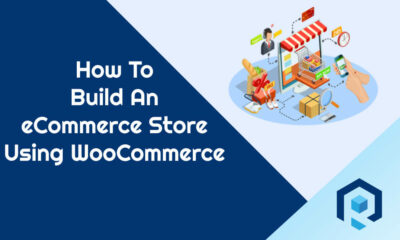

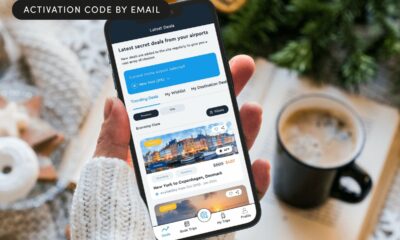

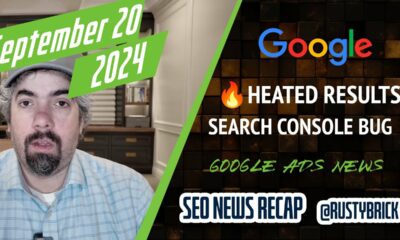

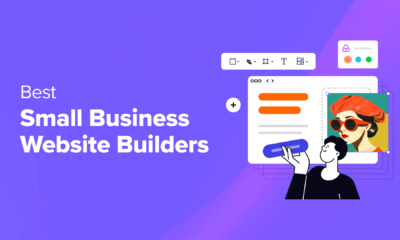






You must be logged in to post a comment Login